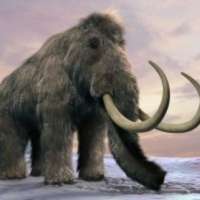Woolly mammoth genome sequencer at UWA

How can a giant woolly mammoth which lived at least 200,000 years ago help to save the Tasmanian Devil from extinction? The answer lies in DNA, the carrier of genetic information.
Stephan Schuster, a Professor of Genetics at Nanyang Technical University, Singapore, became famous around the world when he completed the genome of the prehistoric mammal thousands of years after it had walked the Earth.
As a Raine visiting professor whose visit is supported by the Raine Foundation, Professor Schuster will be at The University of Western Australia next week to give the Raine Lecture and will be available to talk to the media. He is a guest of Nobel Laureate Professor Barry Marshall who will also be available to talk to the media.
Professor Schuster, a world leader in DNA sequencing, was able to recreate the woolly mammoth's DNA from a ball of hair that had been buried under ice in Siberia. He hopes to apply the knowledge to at least seven species living at the brink of extinction, as the woolly mammoth itself was once.
He has also sequenced the genomes of the polar bear and the zebrafish, and is helping with work on the face cancer that is driving the Tasmanian Devil to extinction. In other work, Professor Schuster analysed Archbishop Desmond Tutu's genome and has worked on the genome of the extinct New Zealand flightless moa bird.
The Raine Visiting Professor is hosted by the Marshall Centre for Infectious Diseases. Professor Schuster has worked with UWA's Nobel Laureate Professor Barry Marshall, on helicobacter pylori, for many years.
Assistant Professor Tim Perkins, a geneticist in the Marshall Centre, is co-ordinating Professor Schuster's visit.
"We are now in the post-genomic era," Professor Perkins said. "Medical scientists are now starting to use the information from DNA sequencing in research. The human genome is an important part of our research."
More information: Professor Schuster's Raine Lecture is in the McCusker Auditorium at the Harry Perkins Institute at noon on Thursday 25 September. A light lunch will be served after the lecture.
Provided by University of Western Australia



















